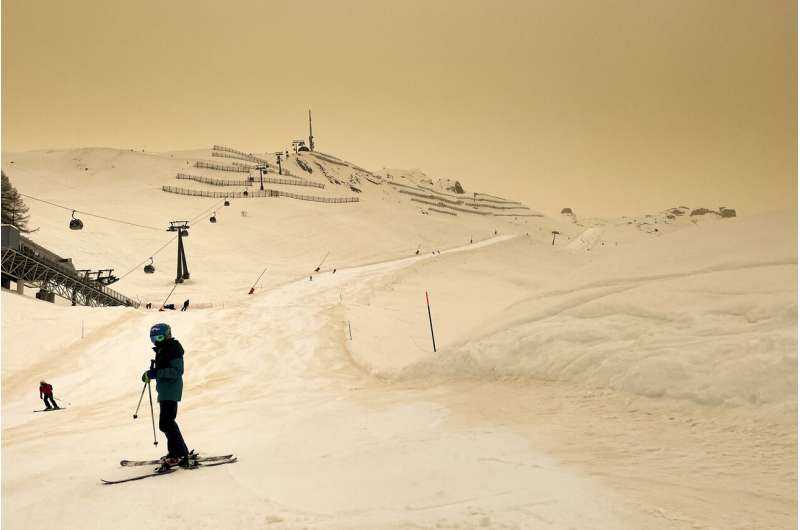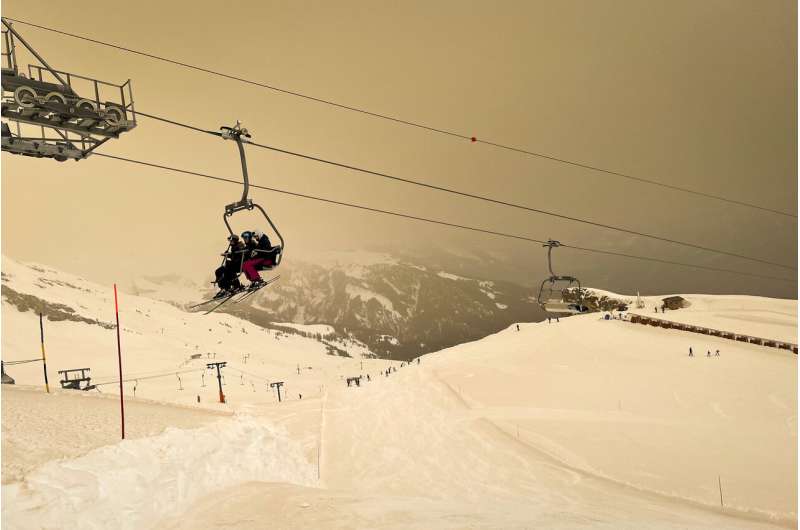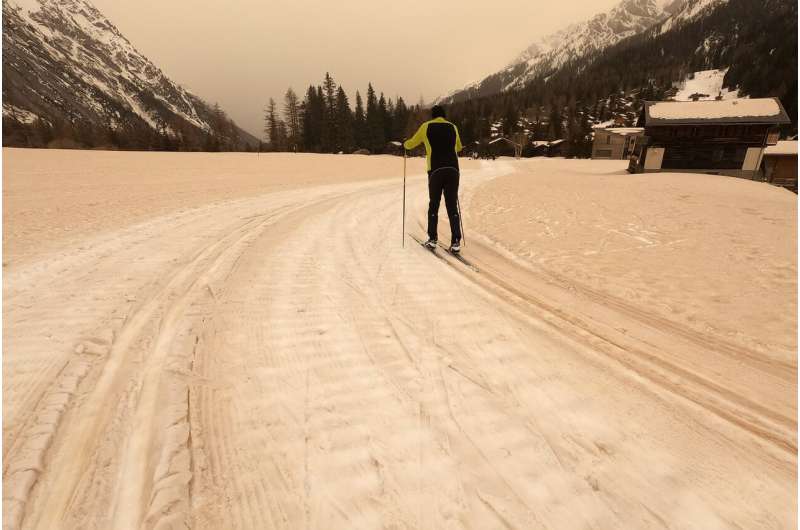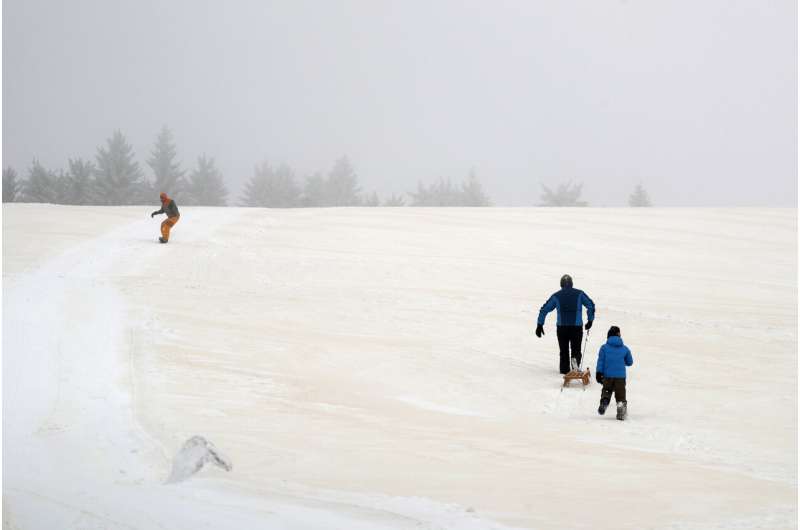Skiers wearing protective face mask ski as Sahara sand colours the snow and the sky in orange and creates a special light atmosphere, during the coronavirus disease (COVID-19) outbreak, in the Alpine resort of Anzere, Switzerland, on Saturday, 6 February 2021. (Laurent Gillieron/Keystone via AP)
A plume of Sahara dust that has blanketed parts of southern and central Europe in recent days caused a short, sharp spike in air pollution across the region, researchers said Tuesday.
The European Commission's Copernicus satellite monitoring program said measured levels of particles smaller than 10 micrometers—so-called PM10s—increased in places such as Barcelona, Spain, and in the French cities of Lyon and Marseille on Sunday.
The cloud of fine sand blown northward from Algeria tinted skies red and mixed with fresh snowfall in the Alps and Pyrenees, leaving slopes looking orange.
While PM10 particles can enter the lungs, causing breathing difficulties, asthma attacks and other health problems, the concentration of Sahara dust didn't reach levels considered harmful.
-
Skiers wearing protective face masks sit on a chairlift as Sahara sand colours the snow and the sky in orange and creates a special light atmosphere, during the coronavirus disease (COVID-19) outbreak, in the Alpine resort of Anzere, Switzerland, on Saturday, 6 February 2021. (Laurent Gillieron/Keystone via AP)
-
View of the cross-country ski track covered with sand, on Saturday, 6 February 2021, at La Fouly in the Val Ferret, Switzerland. The sand of the Sahara has visibly darkened the sky in some places in Switzerland today. After an already increased concentration of dust from the African desert on Friday, even more sand was streaming into Switzerland on Saturday, Meteosuisse reported. (Salvatore Di Nolfi/Keystone via AP)
-
People enjoy the day as Sahara sand colours the snow near Altenberg, Germany, Sunday, Feb. 7, 2021. (AP Photo/Matthias Schrader)
© 2021 The Associated Press. All rights reserved. This material may not be published, broadcast, rewritten or redistributed without permission.



























